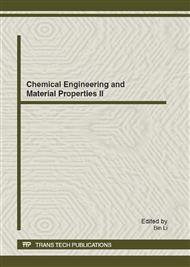p.766
p.770
p.774
p.780
p.785
p.790
p.795
p.803
p.807
Influences of Processing Parameters on Dilution Ratio of Laser Cladding Layer during Laser Metal Deposition Shaping
Abstract:
Laser Metal Deposition Shaping (LMDS) is a state-of-the-art technology that combines rapid prototyping and laser processing. There are many factors affecting the quality, precision, microstructure and performance of LMDS-deposited parts. Among them, dilution ratio is a significant one since it is not only an important index to judge the laser cladding quality, but directly affects the interlayer bonding strength and performance quality of as-formed metal parts. Thus, the substantial LMDS experiments were performed to conclude the influence of processing parameters on dilution ratio of laser cladding layer. The results indicate that the influence degree of scanning speed is most significant, while that of laser power is relatively slight. In order to ensure the perfect forming quality and strong metallurgical bonding, it is necessary to choose suitable dilution ratio to accomplish the LMDS process.
Info:
Periodical:
Pages:
785-789
Citation:
Online since:
July 2012
Authors:
Price:
Сopyright:
© 2012 Trans Tech Publications Ltd. All Rights Reserved
Share:
Citation:


